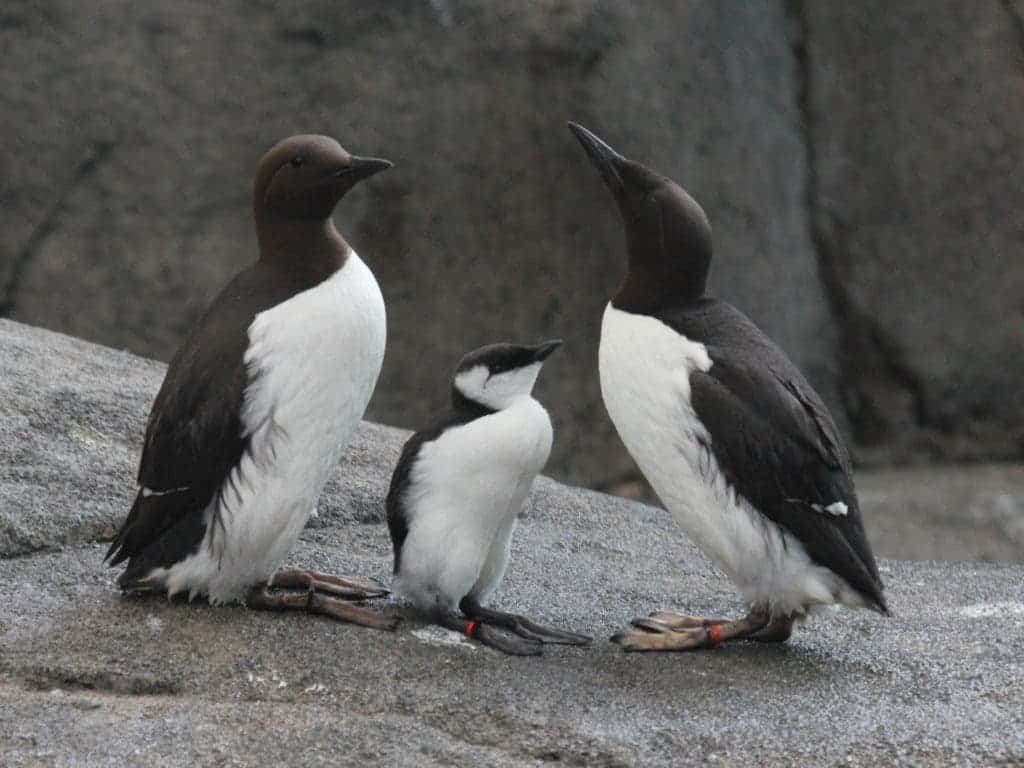The seemingly death-inviting behavior of young guillemots (also known as murres, Uria aalge) — who leap from their nests hundreds of meters above the sea guided by their fathers — has been shown to be an efficient survival strategy for the birds, explaining the bizzare behavior.

Before their wings grow long enough to offer sufficient lift for them, young guillemots jump from the nest into the sea, relying on their fathers to steer them away from the rocks below. Naturally, scientists have long wondered what drives these hatchlings to take the risky leap — there must be an advantage to the species, else the instinct would have been purged by selective evolution.
One of the leading theories was that the hatchlings have to leave the nest when they reach about one-quarter of their adult size because at that age they’re strong enough to defend themselves from predators but too big for the parents to keep feeding them. But chicks who didn’t want to brave the dangerous high seas would simply hop out of the nest and remain close to the colony. In a way, this leap is a leap of faith — the chicks risk a deadly jump hoping to feed (although food resources near the colony aren’t very plentiful) while still benefiting from the colony’s protection.
That theory, however, ran into a lot of problems when scientists from McGill and Memorial Universities in Canada and Aarhus and Lund Universities in Denmark and Sweden, tracked the behavior of guillemot fathers and their chicks for six weeks in colonies off the coast of Newfoundland and in Nunavut, Greenland.
World’s #1 Dad(s)
The murres’ rearing behavior is pretty uncommon among animals: where most species delegate the responsibility to the mother, in the guillemots’ case the chick is raised by both parents for about three weeks, after which the father takes over. He will spend the next 5 to 7 weeks at sea feeding and caring for the chick by himself. The mom spends this time at the colony copulating with other males in search for a suitor to replace her male if he dies at sea and doesn’t return the next year — another bit of promiscuity in the animal world.
“The Arctic summer is short”, says Kyle Elliott, who teaches in McGill University’s Department of Natural Resource Sciences. “The mother must produce an egg quickly. Murres have the highest flight costs of any animal, and the female works hard at the front end flying back-and-forth to the colony, leaving her exhausted by mid-summer.”
“Nonetheless, we were astonished to see how hard the father worked through late summer, spending virtually every daylight hour diving to feed the chick.”
The team noted that mortality rates among guillemot chicks at sea and those in the colony were very similar. Secondly, the chicks at sea grew almost two times faster than those still near the colony, as their fathers had to fly shorter distances to feed them.
“Once you know that there are both higher growth rates for the chicks at sea, and similar survival rates compared with life in the colony, it then makes sense to see this seemingly death-defying leap as a win-win strategy when it comes to survival,” says Elliott.
“We would never have been able to discover this without using the kind of state-of-the-art recorders that are now available and provide a glimpse into the life of murres on the high seas.”
They’re such committed dads, aren’t they?
The full paper “Variation in Growth Drives the Duration of Parental Care: A Test of Ydenberg’s Model” has been published in the journal The American Naturalist.


